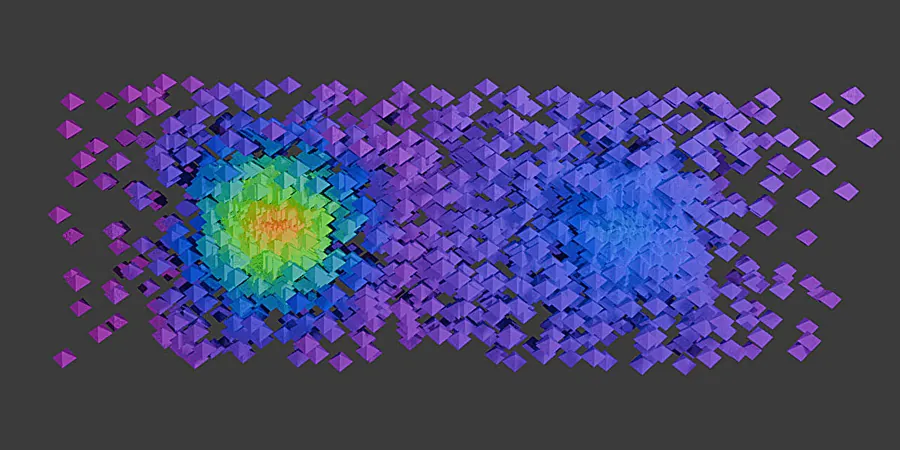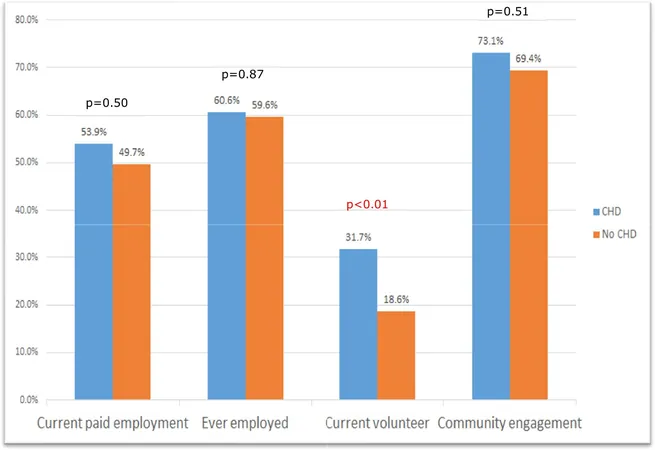
Breakthrough in Quantum Chemistry: Machine Learning Unlocks New Levels of Accuracy
2025-09-20
Author: Wei
Revolutionary Advances in Quantum Chemistry Simulations
A groundbreaking new method for modeling molecules with quantum-level precision has emerged, promising to enhance our understanding of chemical reactions and material properties. This innovative approach is set to reshape fundamental chemistry and materials science.
Supercomputers Under Pressure
In the United States, about one-third of the time on national lab supercomputers is consumed by the quest to comprehend materials and chemical reactions. The pinnacle of accuracy here is the quantum many-body problem, which dives deep into the behavior of individual electrons—crucial players in chemical reactivity, molecular bonding, and electrical properties. However, due to their complexity, these calculations are currently limited to a handful of electrons.
The DFT Paradigm: A Game Changer?
Density Functional Theory (DFT) is gaining attention as a more viable alternative. Unlike many-body calculations, DFT requires computing power that scales with the cube of the number of electrons, rather than escalating exponentially with each new addition. It computes electron densities, enabling simulations of vast numbers of atoms with greater efficiency.
Solving the Exchange-Correlation Puzzle
A significant challenge with DFT lies in the exchange-correlation (XC) functional, which dictates how electrons interact under quantum rules. Researchers have been forced to approximate it for specific cases. Vikram Gavini, a mechanical engineering professor at U-M and a key figure in this study, remarks, "We suspect there exists a universal functional applicable across various systems, but its exact form remains elusive."
The Quest for Universality
In a push towards this universal XC functional, the Department of Energy has fueled the U-M team's endeavors with funding and supercomputing resources. Their strategy involves starting with quantum many-body theory to reverse the more challenging DFT problem. Instead of merely approximating the XC functional, they now use machine learning to derive it directly from established quantum many-body calculations.
Translating Complexity into Simplicity
Paul Zimmerman, a chemistry professor at U-M, spearheads this initiative. His team has crafted a dataset of five atoms and two molecules, including lithium, carbon, and nitrogen. Attempts to include additional elements like fluorine and water yielded no improvements, indicating the dataset's precision for light atoms is already optimal.
Striving for Higher Accuracies
The DFT calculations using their newly derived XC functional have already surpassed expectations in terms of accuracy. Gavini compares their breakthrough to climbing a ladder of precision in DFT. As researchers enhance their understanding of electron behavior, the identification of a universally applicable XC functional represents a tantalizing frontier for future discoveries—one that bridges materials in diverse fields, from battery innovation to drug development.
Future Directions: Uncharted Territories Await
Looking ahead, the team plans to explore solid materials, addressing whether their discovered XC functional holds up across more complex systems. There's also the goal of increasing accuracy further, potentially investigating the behavior of electrons in their individual orbitals—an undertaking that would demand even greater computational power.
A New Era in Quantum Chemistry
With the potential to transform research landscapes across multiple disciplines, this new method paves the way for a more profound understanding of materials and their interactions. The quest to understand the universal XC functional may very well define the next era of quantum chemistry.



 Brasil (PT)
Brasil (PT)
 Canada (EN)
Canada (EN)
 Chile (ES)
Chile (ES)
 Česko (CS)
Česko (CS)
 대한민국 (KO)
대한민국 (KO)
 España (ES)
España (ES)
 France (FR)
France (FR)
 Hong Kong (EN)
Hong Kong (EN)
 Italia (IT)
Italia (IT)
 日本 (JA)
日本 (JA)
 Magyarország (HU)
Magyarország (HU)
 Norge (NO)
Norge (NO)
 Polska (PL)
Polska (PL)
 Schweiz (DE)
Schweiz (DE)
 Singapore (EN)
Singapore (EN)
 Sverige (SV)
Sverige (SV)
 Suomi (FI)
Suomi (FI)
 Türkiye (TR)
Türkiye (TR)
 الإمارات العربية المتحدة (AR)
الإمارات العربية المتحدة (AR)